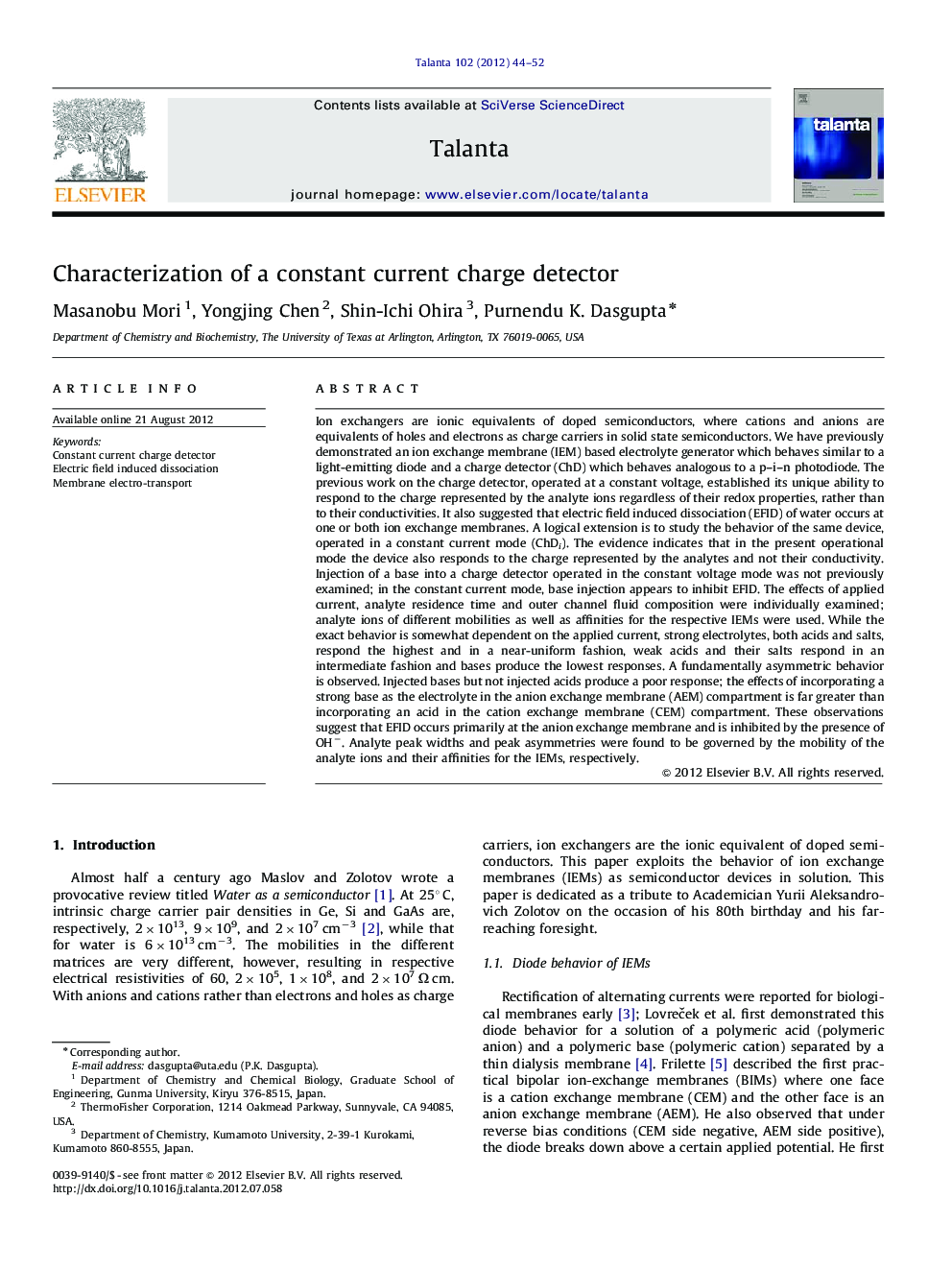| کد مقاله | کد نشریه | سال انتشار | مقاله انگلیسی | نسخه تمام متن |
|---|---|---|---|---|
| 1244425 | 1495833 | 2012 | 9 صفحه PDF | دانلود رایگان |

Ion exchangers are ionic equivalents of doped semiconductors, where cations and anions are equivalents of holes and electrons as charge carriers in solid state semiconductors. We have previously demonstrated an ion exchange membrane (IEM) based electrolyte generator which behaves similar to a light-emitting diode and a charge detector (ChD) which behaves analogous to a p–i–n photodiode. The previous work on the charge detector, operated at a constant voltage, established its unique ability to respond to the charge represented by the analyte ions regardless of their redox properties, rather than to their conductivities. It also suggested that electric field induced dissociation (EFID) of water occurs at one or both ion exchange membranes. A logical extension is to study the behavior of the same device, operated in a constant current mode (ChDi). The evidence indicates that in the present operational mode the device also responds to the charge represented by the analytes and not their conductivity. Injection of a base into a charge detector operated in the constant voltage mode was not previously examined; in the constant current mode, base injection appears to inhibit EFID. The effects of applied current, analyte residence time and outer channel fluid composition were individually examined; analyte ions of different mobilities as well as affinities for the respective IEMs were used. While the exact behavior is somewhat dependent on the applied current, strong electrolytes, both acids and salts, respond the highest and in a near-uniform fashion, weak acids and their salts respond in an intermediate fashion and bases produce the lowest responses. A fundamentally asymmetric behavior is observed. Injected bases but not injected acids produce a poor response; the effects of incorporating a strong base as the electrolyte in the anion exchange membrane (AEM) compartment is far greater than incorporating an acid in the cation exchange membrane (CEM) compartment. These observations suggest that EFID occurs primarily at the anion exchange membrane and is inhibited by the presence of OH−. Analyte peak widths and peak asymmetries were found to be governed by the mobility of the analyte ions and their affinities for the IEMs, respectively.
► This detector responds to charge, not conductivity.
► The detector is operated in an amperostatic mode.
► Decrease in applied voltage is related to analyte concentration.
► Acids and bases behave asymmetrically.
► Much lower signals are observed for bases.
Journal: Talanta - Volume 102, 15 December 2012, Pages 44–52